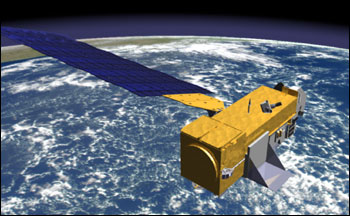

“The problem is that we haven’t had adequate data,” Ramaswamy continues. “Observations have been primarily limited to only a very few locations in the stratosphere. We have only 20 years of full global coverage from satellites. Of course radiosonde goes back 40 years but that is not global coverage.” Jim Hansen, of NASA’s Goddard Institute for Space Studies, agrees with Ramaswamy on the need for data. “Climate forcing by ozone is uncertain because ozone change as a function of altitude is not well measured. Especially at the tropopause (where the troposphere meets the stratosphere), we don’t know enough. The climate system is highly sensitive, especially to changes in the tropopause region. We need exact temperatures and ozone profiles at different altitudes and around the globe.” Hansen and others look forward to the launch of NASA’s Aura satellite in 2004. A vital part of NASA’s Earth Observing System, Aura will observe the composition, chemistry and dynamics of the Earth’s upper and lower atmosphere, including temperatures and ozone amounts. “What Aura will give us is quite exciting. There will be a suite of instruments measuring in regions not well measured before,” says Hansen. |
The graph above shows total ozone and stratospheric temperatures over the Arctic since 1979. Changes in ozone amounts are closely linked to temperature, with colder temperatures resulting in more polar stratospheric clouds and lower ozone levels. Atmospheric motions drive the year-to-year temperature changes. The Arctic stratosphere cooled slightly since 1979, but scientists are currently unsure of the cause. Future NASA missions, starting with the Aura satellite, will improve our understanding of the links between global climate change and ozone chemistry. (Graph based on data provided by Paul Newman, NASA GSFC) | ||

In spite of large uncertainties that remain, scientists express a sense of accomplishment with their achievements so far. “I think one of the successes has to be the fact that we can now explain the observed temperature trends in the stratosphere reasonably well, states Ramaswamy. “There is actually a very strong indication that the observed changes in radiative and chemical species are responsible for globe-wide cooling of the stratosphere.” |
NASA’s Aura satellite, to launch in 2004, will observe the composition, chemistry and dynamics of the Earth’s upper and lower atmosphere, including temperatures and ozone amounts. “What Aura will give us is quite exciting. There will be a suite of instruments measuring in regions not well measured before,” says Jim Hansen, at the NASA Goddard Institute for Space Studies (GISS). (Image by Jesse Allen) |